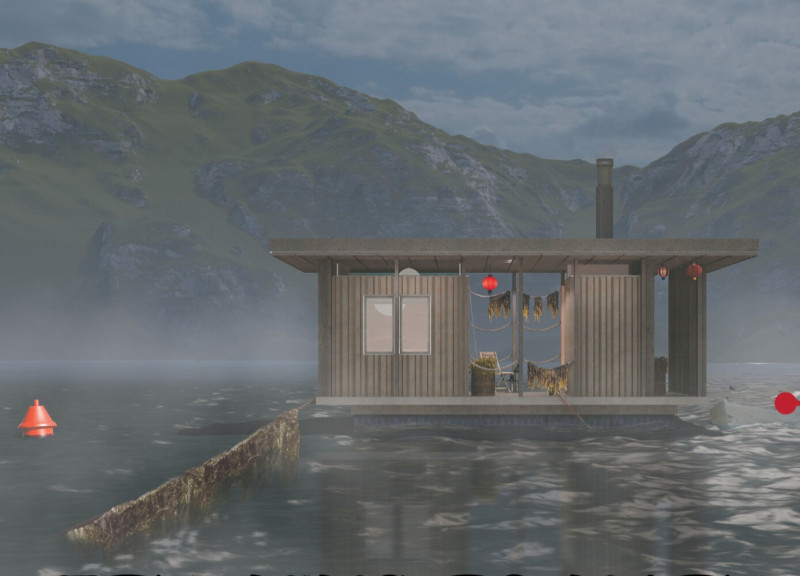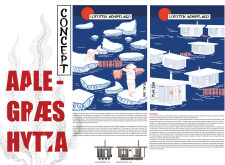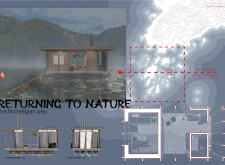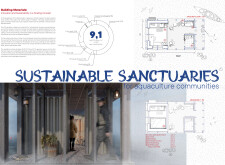5 key facts about this project
### Overview
Located in Henningsvær within the Lofoten archipelago in Norway, Aale-Græs Hytta addresses the environmental challenges posed by climate change, particularly rising sea levels. The project is conceived as a series of floating structures designed to support aquaculture communities, integrating sustainable living practices with local marine ecosystems. The intention is to foster a relationship between habitation and the natural environment, reflecting both cultural heritage and ecological stewardship.
### Structural and Material Strategy
Aale-Græs Hytta features modular, floating cabins that adjust to tidal changes, inspired by traditional Norwegian fishing huts. The primary materials employed include sustainably sourced wood for the structural framework, glass for natural light and views, and steel for durability against marine conditions. Notably, seaweed is innovatively utilized for insulation and aesthetic appeal, emphasizing local practices. Efforts are made to incorporate recycled materials to minimize the project's ecological footprint.
### Sustainable Practices
The design prioritizes energy efficiency through systems such as heat pumps that leverage temperature differentials of the sea and air, in addition to integrating solar panels for renewable energy generation. Rainwater harvesting systems are implemented to provide potable water, enhancing resource efficiency. Furthermore, designated fishing areas and the cultivation of aquatic plants, including seaweed, are incorporated to sustain local practices and promote marine biodiversity, thus maintaining ecological balance within the region.
### Technical Systems
Technical documentation outlines advanced systems for energy-efficient living in a marine setting. Comprehensive heating solutions combine traditional and modern methods to ensure comfortable living spaces while minimizing energy use. Innovative water systems convert seawater into potable water, demonstrating how technology can support sustainable practices in coastal environments.






















































